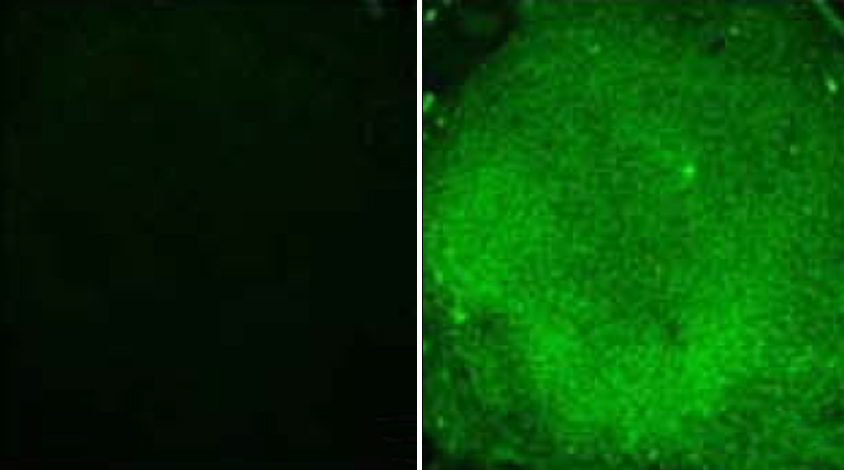
THIS ARTICLE IS MORE THAN FIVE YEARS OLD
This article is more than five years old. Autism research — and science in general — is constantly evolving, so older articles may contain information or theories that have been reevaluated since their original publication date.
A new genetic trick allows researchers to quickly spot the most promising treatments for fragile X syndrome among thousands of candidate compounds1.
Fragile X syndrome is a condition that leads to intellectual disability and sometimes autism. It stems from a genetic alteration to a gene called FMR1. The alteration silences the gene so that none of the corresponding protein is made.
Expressing FMR1 in adult mice that lack the gene can reverse some fragile X features, suggesting that unsilencing the gene in people could be an effective therapy2. Researchers have searched for drugs that have this effect using stem cells derived from people with fragile X syndrome. In these attempts, researchers detect the FMR1 protein, FMRP, by either sequencing RNA from the cells or using antibodies that attach to it. Both procedures are too time-consuming to perform on a large scale.
In the new study, described 16 July in Stem Cells, researchers genetically modified stem cells from people with fragile X syndrome. They fused FMR1 to a gene that encodes luciferase — an enzyme that changes a compound called luciferin so that it glows green. They then transformed the modified stem cells into precursors of neurons.
The researchers grew 1,536 identical batches of these neuronal precursors in tiny wells. They added a different drug along with luciferin to each well, testing a total of 1,134 compounds. They then scanned the plates for the green glow indicating that the luciferase-tagged FMR1 gene is being expressed.
The screen flagged two compounds known to induce FMR1 expression. Both drugs can only activate the gene during cell division, however, making them unlikely to work in neurons, which do not divide.
Since publishing the study, the researchers have screened 150,000 compounds and found a few others that activate FMR1. They plan to test the effectiveness of these compounds in mice whose brains contain neurons derived from the human fragile X stem cells.
By joining the discussion, you agree to our privacy policy.